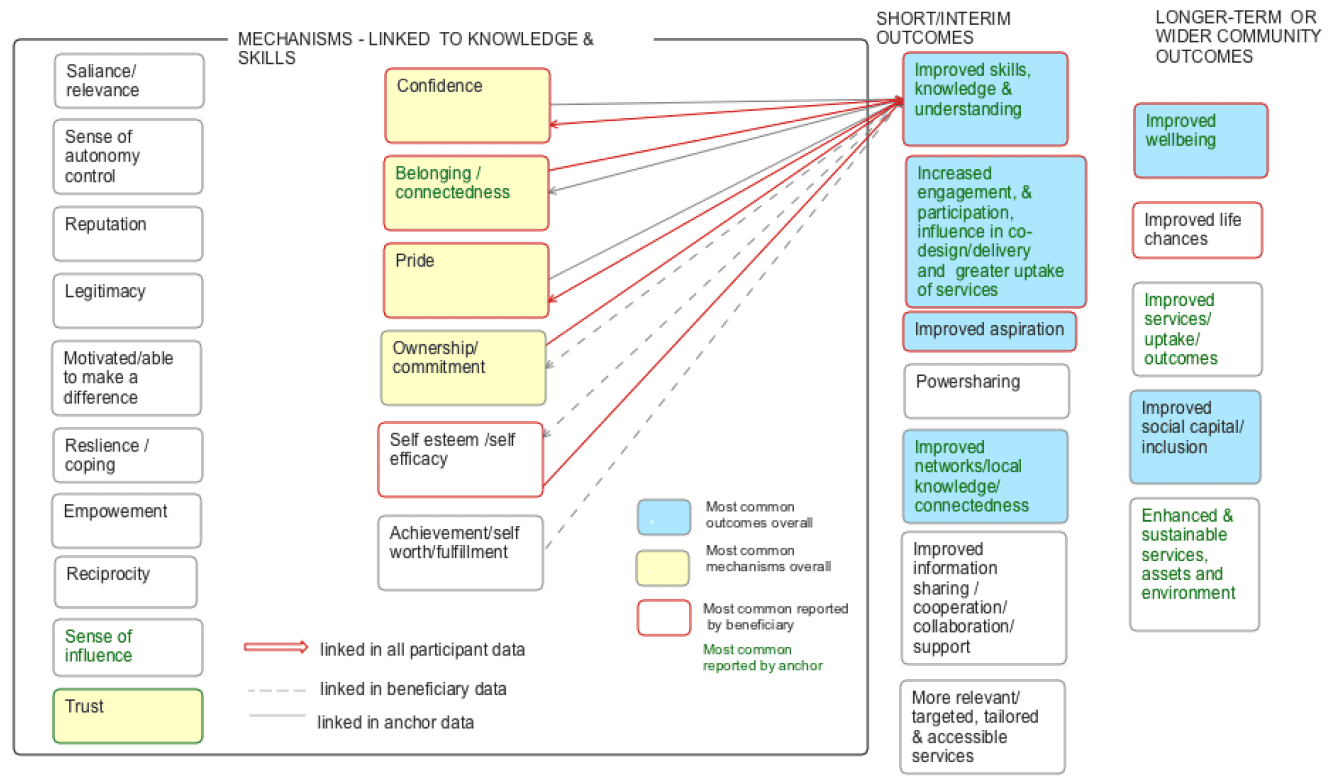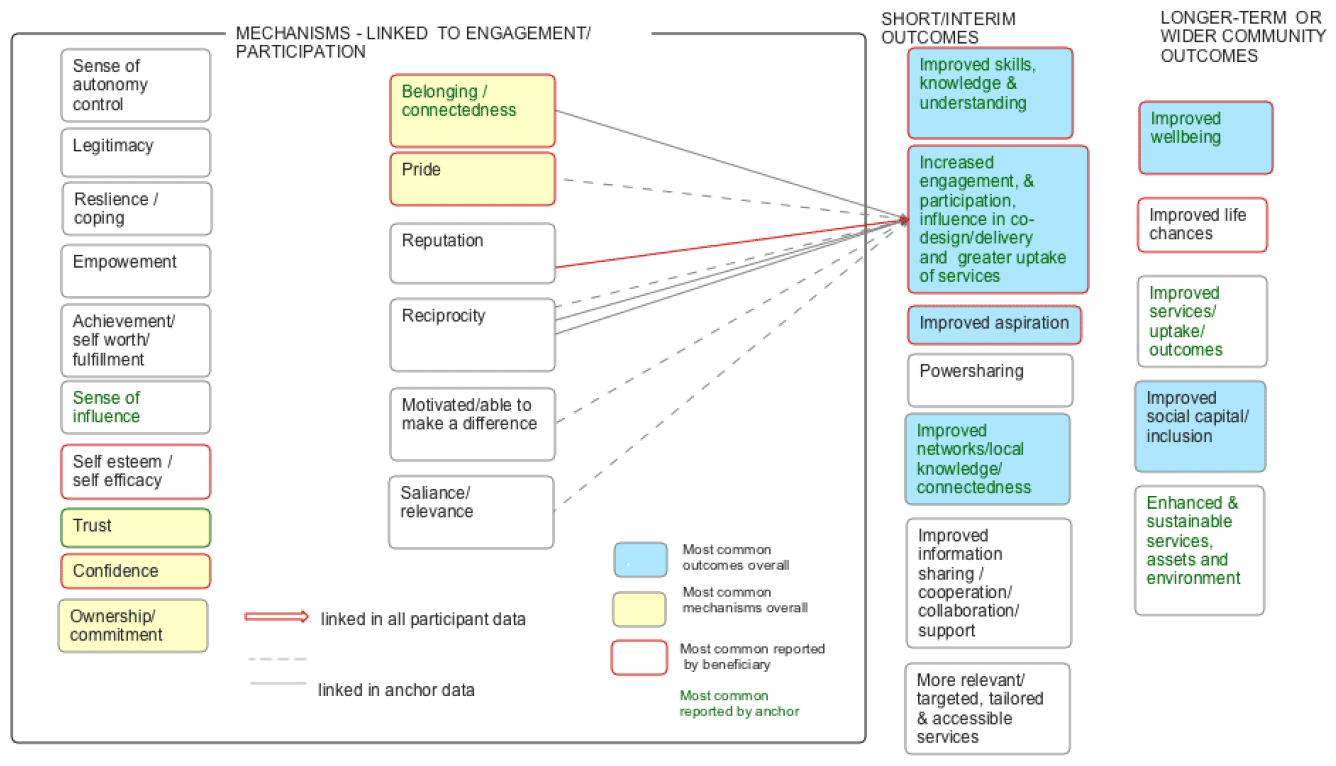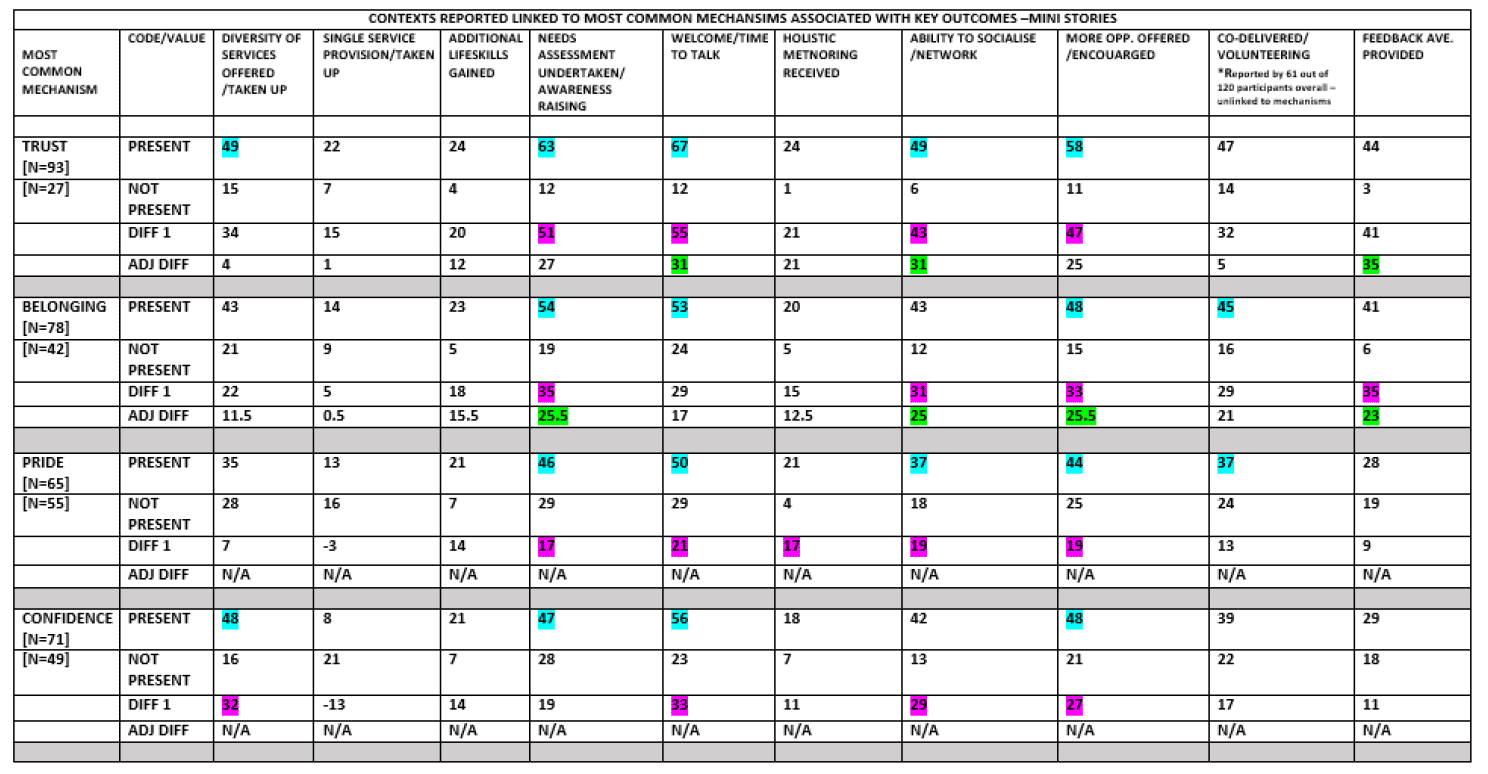Community-led regeneration approach: review
Findings from an independent review into the partnership approach delivered by the People and Communities Fund (PCF).
Appendix D: Full Mechanism Tables
The following tables illustrate the mechanisms most strongly linked to two key commonly reported outcomes: "Improved skills, knowledge and understanding" and, "Increased engagement & participation, influence in co-delivery/design and greater uptake of services."
The models show the mechanisms most strongly linked by the sub groups (beneficiaries and Community Anchor Staff) as well as overall participants -based on differences in the frequency of reporting of any mechanisms when these outcomes were present or not; using a figure adjusted to account for differences in the denominators in the two groups. Other mechanisms may contribute to the short-term outcomes but not as strongly as those linked.
Figure D.1: Mechanisms Linked to Knowledge and Skills

Figure D.2: Mechanisms Linked to Engagement/Participation

Contexts Reported Linked to Most Common Mechanisms Associated with Key Outcomes
Context data were recorded from the mini interviews. These interviews were used to uncover participants' personal journeys, their feelings and experiences about aspects of PCF projects processes. An analysis similar to that conducted for the links between mechanisms and outcomes was undertaken to assess the frequency of the project contexts that were present when the four most common mechanisms (belonging, pride, confidence and trust) were.
This judgement was made not based on the frequency that the mechanisms were reported when the outcome was present nor the difference in frequency between the outcome present and not present but on the difference after the figures were adjusted for the respective population sizes. This accounted for the fact that when an outcome was frequently reported the number of participants in the 'outcome not present' population were substantially smaller that the 'outcome present' population.
Again, judgements were made using the difference in frequency of the presence of the contextual issues when the mechanism was and was not reported. Where the number of participants reporting the mechanism was greater than the number not reporting it, the analysis was repeated estimating the difference in frequency based on an adjusted figure that multiplied up the 'mechanisms not present' figures by that same multiple. This was to reduce the likelihood that the association was simply random/due to an artefact.
Figure D.3: Contexts Reported Linked to Most Common Mechanisms Associated with Key Outcomes

N Overall =120
Contact
There is a problem
Thanks for your feedback